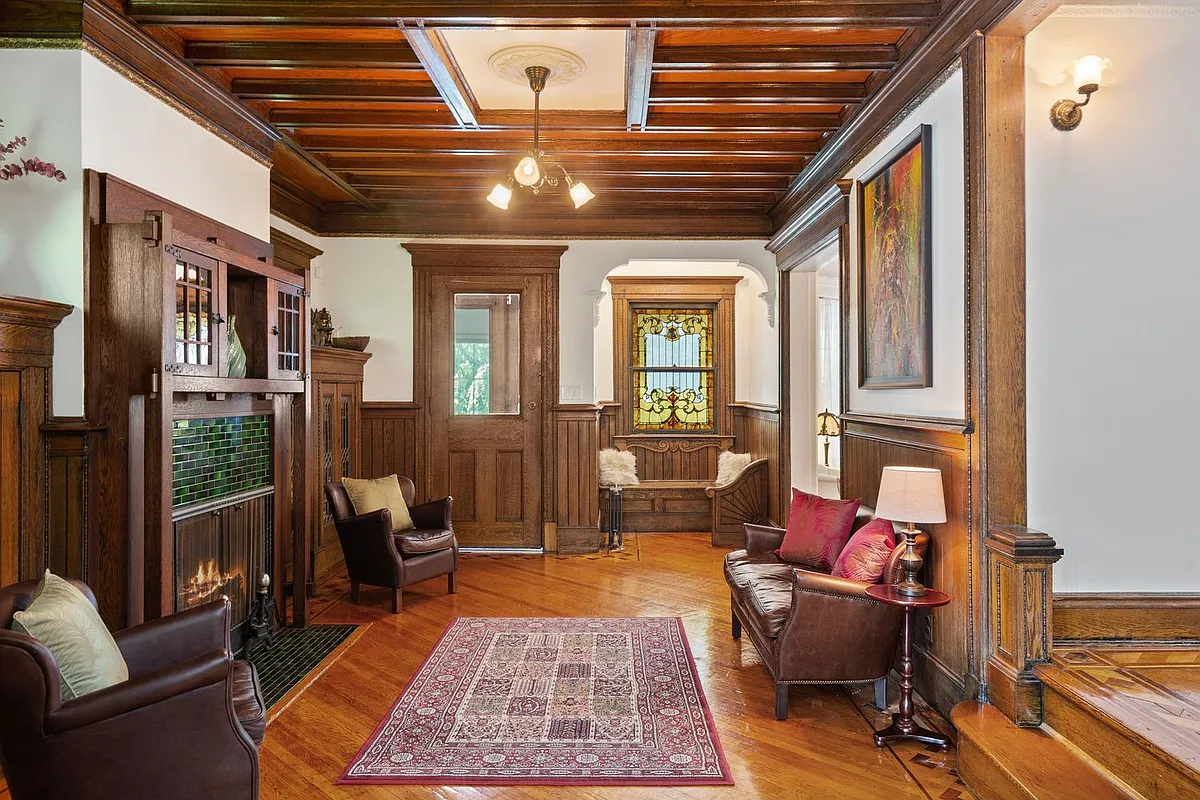Admiral's Row: "Extremely High Level of Historic Integrity"
A tipster who must have a day job as a stenographer passed along some highlights from the “Assessment of Admiral’s Row” report that was prepared by Beardsley Design Associates and Crawford & Stearns for the National Guard and was made briefly available for public viewing on Tuesday night. One of the main aspects that the…


A tipster who must have a day job as a stenographer passed along some highlights from the “Assessment of Admiral’s Row” report that was prepared by Beardsley Design Associates and Crawford & Stearns for the National Guard and was made briefly available for public viewing on Tuesday night. One of the main aspects that the consultants were charged with evaluating was the “historic integrity” of the site as a whole and the buildings individually. Bottom line: If the results were a report card, Admiral’s Row would have Straight A’s.
After application of the aspects of historic integrity to the collective Admiral’s Row district with due consideration of existing deterioration, it is apparent that all seven aspects of historic integrity are strongly present. The Admiral’s Row district retains an extremely high level of historic integrity to the historical significance of the BNY…After application of the aspects of historic integrity to the individual buildings, with due consideration of existing deterioration, it is apparent that all seven spects of historic integrity are strongly present in nine of the ten Quarters.
The report goes on to say that Quarters B and D are “exceptional and retain an extremely high level of historic integrity” while H, K, L and I retain a “high level” of historic integrity. Only Quarter C doesn’t make the grade with the consultants. And what kind of shape are the buildings in structurally? “In general, the structural integrity for the original 19th Century portions of the buildings’ superstructure appear to be sound, level and plumb.”
p.s. Readers may be interested in checking out Gowanus Lounge’s take on the situation this morning.
Officers’ Row: Let’s Have Our Cake and Eat It Too [Brownstoner]
Officers’ Row Preservation Coming to a Contentious Head [Brownstoner]
For Officer’s Row, Supermarket All But Certain [Brownstoner]
Admiral’s Row Fixup to Cost $20M [NY Daily News]
Real Estate Round-Up [Brooklyn Eagle]
Photo from Officersrow.org





Look, it is the responsibilty of the Government to maintain and care for these buildings, or at least try to. They are publicly-owned buildings which are aknowledged historic resources – this makes them regulated by a raft of environmental review laws, all of which state quite clearly that governmental action should not – if possible – negatively impact them. Asking for private dollars to fix them up is nice, but the governmental agencies need to commit to that ask (i.e., need to construct an RFE in such a way as to solicit all possible alternatives). Anything less is a abrogation of governmental responsbility.
reading expert studies like this, it is very hard to understand why the BNY wants to destroy part of their own history like this, even though they’re talking about building a history museum and visitor center (or whatever they’re calling it) out of a far less historic structure. one can only conclude that the BNY people are either a) stupid, b) have another agenda, or c) all of the above.
and although i think money and profit is the BNY’s overarching agenda, i imagine that they might come by more money in the end if they preserve these historic structures.
thanks for your drive-by expert’s opinion of the structural integrity of these houses. I’ll take that over the actaul expert’s assessment any day. Were you driving on your way to the prospective developers office?
I just drove by these houses yesterday. They look like they are on the verge of collapse.
They have obviously been exposed to the elements for many, many years. There is no hope for these houses folks. People are starving and living in substandard housing, or out on the street. It will cost literally tens of millions of dollars to restore these properties. Even then, it won’t even really be a restoration as much as a reproduction.
9:45 you are spot on. Sadly, this is the great flaw of democracy. Public policy becomes a game of throwing a bone to the mangy dogs howling with hunger. In this case, the bone simply won’t satisfy enough dogs.
If 9:22 can think of all-caps-only one explanation for why there is political reluctance to save Admirals Row, then s/he just cannot see beyond their own perspective on things.
None of the allegedly corrupt politicians would deny the historic value of these structures. Nor, if they did their homework at Tuesday’s poster discussion (or before or since), would they deny that the buildings can be restored. There is quite simply broad consensus that restoring the buildings is not a priority use of public dollars. As I wrote yesterday, if adaptive reuse is going to work here, people who want to save Admirals Row will need to produce realistic financial projections for their alternatives to the Navy Yard’s plans. The preservation-minded should also secure letters of intent from prospective tenants. That is how development gets done. It isn’t just, “but I want it.”
houses don’t restore themselves, someone has to be interested and motivated to do so. No one has emerged to do that in this case. These houses are toast, let’s concentrate on the many other endangered houses in the Wallabout area that are in far better condition and that are just as threatened by redevelopment.
I guess my question is this: which politician promised this site (vacant) to which developer? That has to be the ONLY explanation for why there’s so much political reluctance to save these wonderful historic resources.
This sounds like it could be a slam-dunk adaptive-reuse project, if only some backroom deals hadn’t been made first.
The National Register recognizes seven aspects or qualities that, in various combinations, define integrity. The seven aspects of integrity are the integrity of location, setting, design, materials, workmanship, feeling, and association. To retain historic integrity a property will always possess several, and usually most, of these seven aspects.
Just donate them to the British or the Germans – they’ll cherish them and look after them properly.